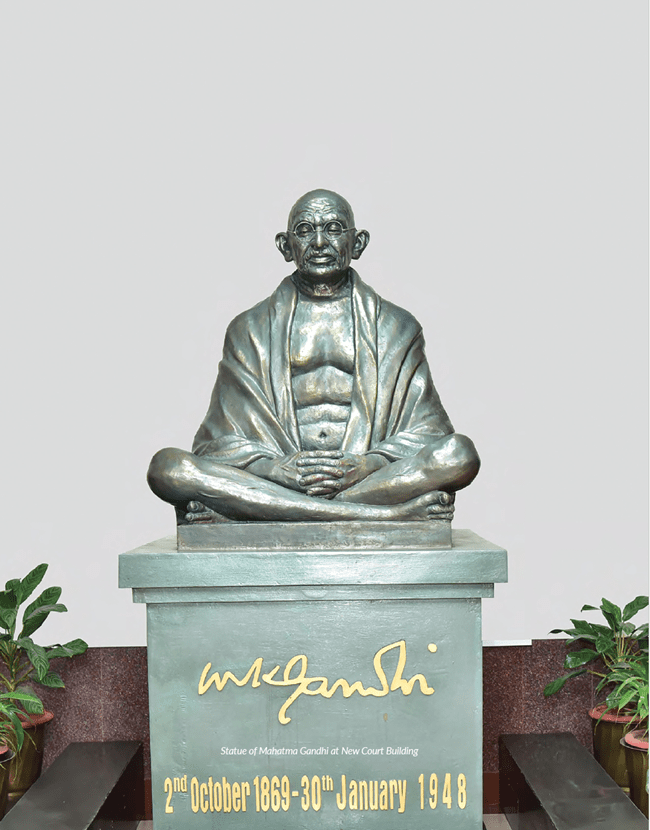

Introspection
The last few years have witnessed concerted efforts by the judiciary in Odisha to introspect and improve upon its previous performance. Such exercise has helped in identifying the challenges and finding ways to tackle them effectively. 2023 saw considerable progress in certain areas. Loss of court working hours could be reduced substantially. Establishment of Virtual Centres of the High Court in the Districts has enabled the lawyers and litigants in remote corners to file, appear and argue in the cases before the High Court. Steps like setting up of paperless courts in district judiciary and implementation of NSTEP etc. have greatly eased its functioning. However, a lot still remains to be achieved in order to make the judiciary move responsive to the problems of litigants.
Reduction in loss of working hours
Loss of Court working hours was one of the biggest stumbling blocks faced by judiciary till the end of 2022. This major challenge could be overcome due to the orders passed by the Supreme Court on 12th December, 2022 and 14th December, 2022 in TP(C) No. 2419 of 2019 [M/s. PLR Projects Pvt. Ltd versus Mahanadi Coalfields Ltd. and others]. Earlier, frequent holding of references due to deaths of lawyers and judges caused huge loss of court hours in the High Court. In district judiciary, the main reasons for the loss of court hours were cease work, picketing and strike by lawyers. References are now being held in the High Court and district judiciary at best once in a month after 3 pm. Besides, cease work, picketing and strike by lawyers in the district judiciary has become zero.
While 3,118 court working hours were lost in the High Court in 2022, it came down to 2,009 hours in 2023. Similarly, the loss of court working hours in district judiciary came down from 2,22,447.6 hours in 2022 to 19.37 in 2023.
Judges strength
The sanctioned strength of judges in the High Court in 2023 remained at 33. The working strength was 22 as on 1st January, 2023 and 20 as on 31st December, 2023.
The sanctioned strength of district court judges as on 31st December, 2023 was 1011. The working strength as on 1st January, 2023 was 815 and as on 31st December, 2023 it was 801.
13 officers in the cadre of District Judge were inducted into the judicial service in 2023 leaving a vacancy of 36 posts which would be filled up in 2024.
For 53 vacancies to be filled up in the cadre of Civil Judge, recruitment was conducted by the Odisha Public Service Commission through preliminary examination, main written examination and viva voce test, and 50 candidates were selected and appointed in 2023.
Impact of rationalization of case loads
After the resolution passed in the District Judges’ Conference, 2022, steps were taken for rationalization of case load among different courts so as to ensure an optimal distribution. In the process, about 3 lakhs cases were transferred by the transferring courts to the trial courts and 25 new cognizance taking courts were inaugurated across the state in 2022. Its positive impact was felt in 2023. This has greatly improved the efficiency of the courts in district judiciary.
Disposal of old cases
The pendency of old cases in both civil and criminal side, particularly the 25-40 years old and more than 40 years old, was a challenge for the district judiciary. Pendency of 25 to 40 years old cases reduced from 4637 to 2169 at the end of 2023. Similarly, the pendency of more than 40 years old cases reduced from 32 to 26. This could be achieved due to consistent overseeing and monitoring of the pendency and disposal of cases by the Administrative Judges of the respective districts.
The pendency of more than 25 years old cases is reviewed by the Administrative Judges every month. The challenge Still remains to reduce the pendency of more than 25 years old cases to zero. While pendency of such civil cases came down from 1,210 to 812 at the end of the year, pendency of the criminal cases was reduced from 3,427 to 1,357.
Despite sincere attempts, desired result could not be achieved in respect of 40 years old cases. The pendency of 40 years old civil and criminal cases has come down from 32 to 26.
High Court has prioritized to achieve 100% Case Clearance Rate (CCR) to avoid docket explosion. District judiciary is being persuaded to maintain at least 100% Case Clearance Rate (CCR). In 2023, the judgeships of Cuttack, Gajapati, Kalahandi, Puri and Rayagada have attained more than 100% CCR. Despite all such sincere attempts, the district courts could not achieve the CCR of 128.77% of 2022.
Infrastructure
In recent years much emphasis has been laid in improving the infrastructure of the district judiciary including stakeholder-friendly court complexes and residential accommodation for judicial officers and staff. In 2023, 8 Taluk Court Buildings and one Bar Hall and Amenity Centre in different districts were completed and inaugurated and 5 residential quarters for judicial officers were constructed. Besides, foundation stone for 550 staff quarters for the High Court employees was laid at Cuttack in 2023. Steps are being taken to enhance security of Court Buildings by CCTV surveillance.
Traditional Challenges
In criminal cases before the district judiciary, non-execution of warrants and long abscondance of accused persons have remained the major challenges as before, though there has been some progress in procuring attendance of official witnesses due to facility of virtual court hearing. The District Judges are being persuaded by the Administrative Judges to coordinate with the police administration for expeditious execution of warrants.
On the civil side, non-availability of Salaried Amins was causing problem in disposal of execution cases. In 2023, 65 posts of Salaried Amins were created by the State Government in the district courts across the state pursuant to the resolution adopted in the District Judges’ Conference which would help in disposal of execution cases.
Implementation of NSTEP has helped in service of summons on parties. Under this project, mobile phones with GPS tracking facility have been supplied to the process servers across the state through which their movement can be tracked and real time status of service of summons can be checked by the courts. However, dearth of adequate number of process servers is a problem for execution of writs and service of summons.
Undoubtedly, challenges remain as there is still a lot to be done to fulfill the constitutional obligations in the true sense. Odisha judiciary remains committed to work in that direction with sustained vigour.

Pink soapstone craft depicting “banyan tree” displayed in Chief Justice’s chamber

Palm leaving engraving or “tala patra chitra” displayed in Judges’ Lounge
